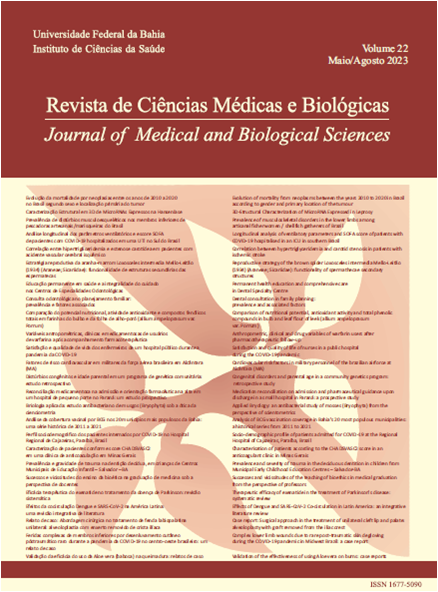Anthropometric, clinical and drug variables of users of varfarine after pharmacotherapeutical follow-up
DOI:
https://doi.org/10.9771/cmbio.v22i2.47779Keywords:
Warfarin, Drug interactions, Abdominal circumference, Obesity, HypertensionAbstract
Introduction: Warfarin is an anticoagulant drug for the treatment of cardiac, thromboembolic and hypercoagulable diseases. It is considered potentially dangerous due to its narrow therapeutic window and large response variability. The aim of the study was to evaluate the impact of pharmacotherapeutic monitoring on the use of medications and drug interactions in patients who use warfarin from the Public Health System, as well as to associate monitoring with clinical measurements of blood pressure and body mass index. Materials and Methods: 47 patients participated in the research, where a randomized, parallel, controlled clinical trial was carried out, comparing the Intervention Group (n=23), through pharmacotherapeuticfollow-up in patients using warfarin from the Public System of Health in the municipality of Ijuí, with a control group (n=24), without pharmacotherapeutic follow-up. Results: This study did not show an association between pharmacotherapeutic follow-up and anthropometric measures such as BMI and waist circumference, but found a high prevalence of these altered variables, such as overweight and obesity. There was an improvement in blood pressure in the Intervention Group compared to the control group, which demonstrates the benefit of follow-up. Discussion: anticoagulation control can be influenced by diet, medication use, age and morbidities and its use require monitoring of INR levels and assessment of treatment adherence. Conclusions: Warfarin users are susceptible to bleeding, thrombosis, drug interactions, and the very risks of obesity, hypertension and abdominal adiposity, requiring follow-up to avoid possible negative effects.
Downloads
Downloads
Published
How to Cite
Issue
Section
License
Copyright (c) 2023 Journal of Medical and Biological Sciences

This work is licensed under a Creative Commons Attribution 4.0 International License.
The Journal of Medical and Biological Sciences reserves all copyrights of published works, including translations, allowing, however, their subsequent reproduction as transcription, with proper citation of source, through the Creative Commons license. The periodical has free and free access.


